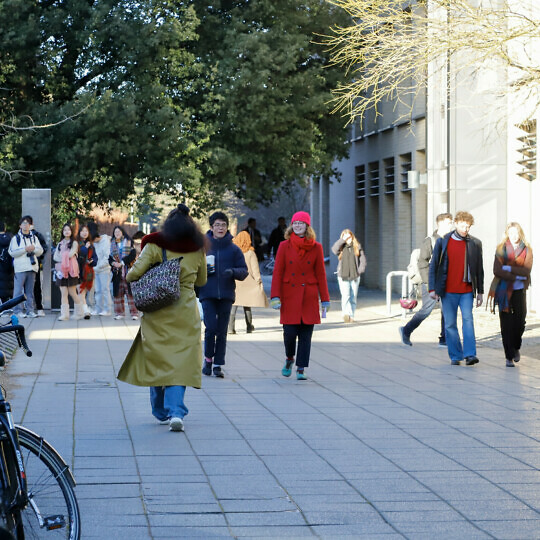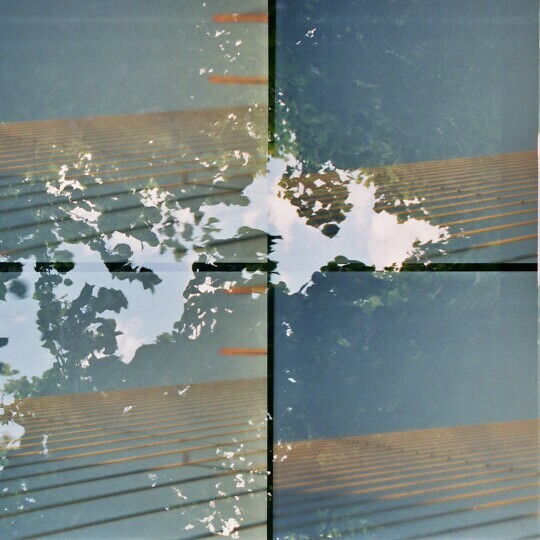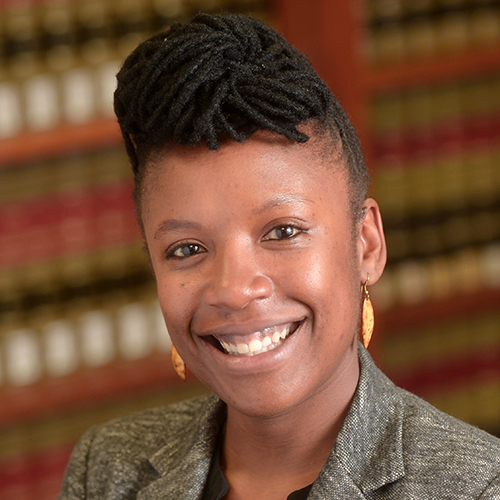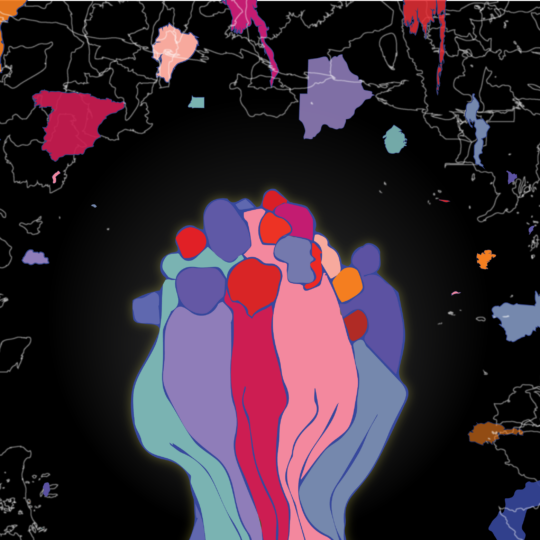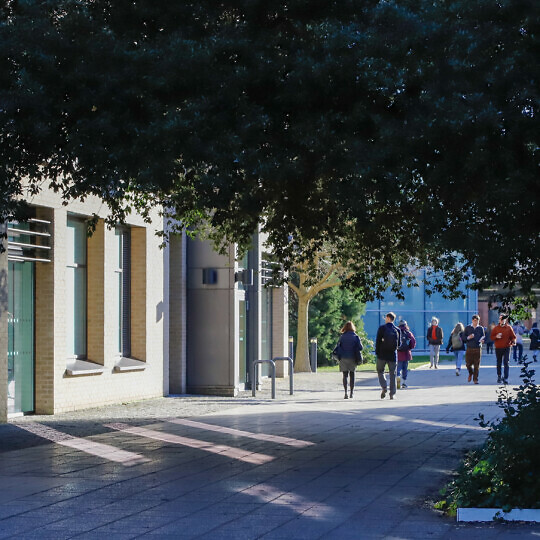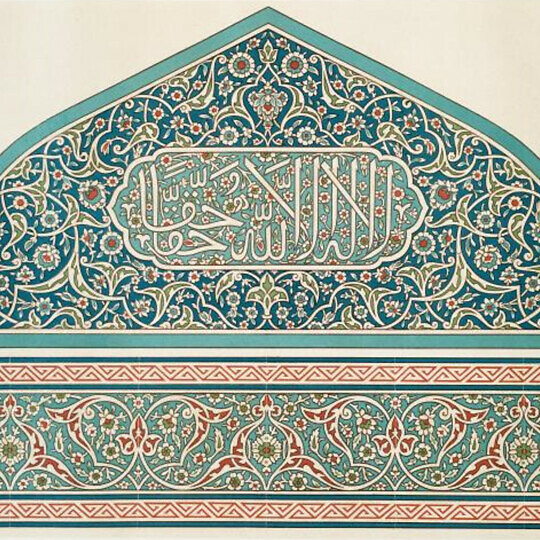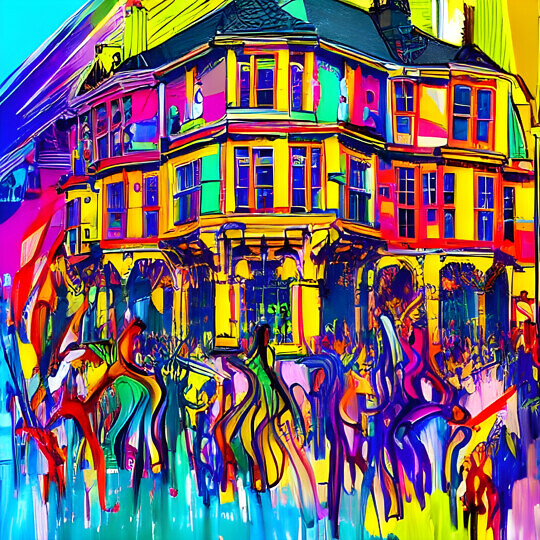| 1 Jun 2018 - 2 Jun 2018 | All day | SG1 and SG2, Alison Richard Building | |
- Description
- Programme
- Abstracts
Description
Registration for this symposium is now closed.
Convenors
Brad Epps (University of Cambridge)
Alyce Mahon (University of Cambridge)
Summary
Subversive Intent & Beyond: Surrealism, Politics, Sexuality is a two-day symposium which aims to address the subversive intents and contestatory acts, the legacies and lessons, of Surrealism, especially as they bear on politically charged questions of sexuality, gender, race and nationality. Our symposium takes as a critical focal point Susan Rubin Suleiman’s Subversive Intent: Gender, Politics and the Avant-Garde (1990), in arguing for a 'feminist poetics' that subverted a longstanding masculinist tradition. Since the publication of Suleiman’s book, numerous scholars have taken that argument further and/or expanded Surrealism’s history to acknowledge a warren of transnational multi-gendered, polysexual, ethnically and racially diverse positions. Inasmuch as our conference signals a 'beyond' to subversive intents, it aims to map the trajectories of other subversive intents, other voices and practices, related, in one way or another, to Surrealism’s heterogeneous history.
The symposium is also planned to coincide with the fiftieth anniversary of May 1968 and takes as a second focal point how the events of ’68 might be seen as a ‘coming of age’ for this avant-garde movement. It will thus reflect on the extent to which the events of 1968 witnessed many Surrealist-inflected ambitions, actions and ultimatums ('Power to the imagination!'; 'I take my desires for reality because I believe in the reality of my desires!'), how Surrealist strategies were appropriated by younger artistic and intellectual movements, and the need to go beyond a French and Eurocentric frame when reviewing Surrealism’s impact on events globally.
The symposium will open with an introductory lecture by Professor Suleiman, who will reflect on her 1990 publication, its attention to feminist and post-modernist aspects of the avant-garde, and to the ways in which Surrealism has been expanded and enriched, queried and contested. Suleiman’s lecture will be followed by a series of papers, organised in thematic sessions, by established scholars in the field of Surrealism. Sessions will address Surrealism and the ‘class of ‘68’; Surrealism, decolonization and race politics; Surrealism in Latin American; and Surrealism and new social movements (Feminism, Queer Surrealism). They will also be emphatically interdisciplinary and international – looking to art, film, literature and new media, as well as feminist, queer and postcolonial studies.
Sponsors



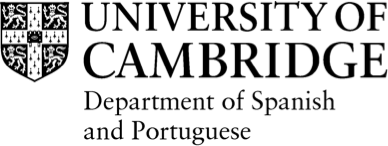
Supported by the Centre for Research in the Arts, Social Sciences and Humanities (CRASSH), King's College, the Raymond and Beverly Sackler Conference Series Fund (Trinity College), and the University of Cambridge's Department of French and Department of Spanish & Portuguese.
Administrative assistance: events@crassh.cam.ac.uk.
Programme
| Day 1 - Friday 1 June | |
| 9.15 - 9.45 | Registration |
| 9.45 - 10.00 | Welcome Brad Epps & Alyce Mahon (University of Cambridge) |
| 10.00 - 11.00 | Plenary Susan Rubin Suleiman (Harvard University) 'What Remains? Rereading Subversive Intent Two Decades Later' |
| 11.00 - 11.30 | Tea & Coffee |
| 11.30 - 13.00 | Session I: Surrealism & Liberty Chair: Alyce Mahon (University of Cambridge)
Sam Bardaouil (Art Reoriented) 'Art et Liberté: Rupture, War and Surrealism in Egypt (1938-1948)'
Fabrice Flahutez (University of Paris Nanterre) 'A Genealogy of Women Heroes: Surrealism to International Situationism, 1920-1978' |
| 13.00 - 14.00 | Lunch |
| 14.00 - 16.15 | Session II: Latinx Surrealism Chair: Mara Polgovsky (University of Cambridge)
Sofia Gotti (Independent Curator and Scholar) 'After Pop We
Rubén Gallo (Princeton University) 'Surrealism in Cuba: Coercive Intents'
Sergio Delgado Moya (Harvard University) 'Glitter and gangrene, or beauty in revolt in the works of Patssi Valdéz' |
| 16.15 - 17.00 | Drinks Reception |
| Day 2 - Saturday 2 June | |
| 9.15 - 9.30 | Welcome Brad Epps & Alyce Mahon (University of Cambridge) |
| 9.30 - 11.00 | Session III: Surrealism & Transgression Chair: Ian James (University of Cambridge)
Dawn Ades (University of Essex) 'Dalí/Duchamp'
Antonio Monegal (Universitat Pompeu Fabra) 'Surrealist Sade: The Politics of Transgression in Bataille and Buñuel' |
| 11.00 - 11.30 | Tea & Coffee |
| 11.30 - 13.00 | Session IV: Feminist Tales Chair: Brad Epps (University of Cambridge)
Marta Segarra (CNRS & Universitat de Barcelona) 'Queer Sexuality and Fairy Tales in Claude Cahun and Maria-Mercè Marçal'
Katharine Conley (William & Mary) 'Beyond Kay Sage’s “Pavilions of Dreaming” (1957-63)' |
| 13.00 - 14.00 | Lunch |
| 14.00 - 15.30 | Session V: Surrealism & Sexuality in the USA Chair: Amy Tobin (University of Cambridge)
Jonathan D. Katz (University at Buffalo) 'George Platt Lynes, Sexuality and the Surrealist Feint'
James Boaden (University of York) 'Fools and Faeries: A Reunion of Friends' |
| 15.30 - 16.00 | Tea & Coffee |
| 16.00 - 17.00 | Roundtable |
Abstracts
Dawn Ades (University of Essex)
'Dali/Duchamp'
Eroticism pervades the work of Marcel Duchamp and Salvador Dalí. This talk will focus on their inventiveness in exploring and representing the erotic – visually, verbally and materially. I will make particular reference to the thinking and the research behind the recent exhibition, Dali/Duchamp (Royal Academy and the Dalí Museum, 2017-18) and the section in that exhibition which focused on eroticism, Readymades and the body in Surrealism.
Sam Bardaouil (Art Reoriented)
'Art et Liberté: Rupture War and Surrealism in Egypt (1938 – 1948)'
Through consulting a significant body of artworks from the 1920s until the 1940s, along with a diverse corpus of unpublished primary sources, this presentation focuses on Art et Liberté’s contributions to a distinct Surrealist language that was at once, internationally minded yet locally engaged. It will also present the exhibition Art et Liberté: Rupture War and Surrealism in Egypt (1938 – 1948) and the curatorial approach underpinning it, which posits the group’s contributions to Surrealism beyond the polemics of post-colonial discourse and the polarizing paradigm of Saïd’s Orientalism, therefore advocating a new understanding of the Surrealist movement.
James Boaden (University of York)
'Fools and Faeries: A Reunion of Friends'
This paper will look at the relationship between surrealism and radical queer artistic practices both forwards and backwards from 1968 in a North American context. The homophile movement of the 1950s – represented by groups like the Mattachine Society – has often been understood as normative in intent, moving towards assimilation. The gay liberation movement emerging from the sexual revolution in the 1960s is commonly understood to have both challenged and superseded the aims of that group. While writers such as Jonathan D. Katz, Douglas Crimp, and Jose Munoz in the last decade have drawn attention to the way in which queer cultures that existed in advance of the Stonewall rebellion developed ways of being that were quite counter to assimilation with the wider society what became of those who had followed the homophile path in the wake of gay liberation remains relatively neglected. This paper will address the films of James Broughton (made between 1946 and 1988) in relation to the parallel life of Harry Hay – the founder of the Mattachine Society – tracing their path from 1968 towards the emergence of the rural-focused gender-queer group the Radical Faeries in the late 1970s. It will look at the importance of surrealism for thinking about the Faeries and what can be learned from thinking through the group’s understanding of intergenerational and anachronic dialogue.
Katharine Conley (William & Mary)
'Beyond Kay Sage’s “Pavilions of Dreaming”'
The four books of poetry published in French and English between 1957 and 1963 by Kay Sage, born Katherine Linn Sage (1898-1963) near Albany, New York, reveal the growing isolation she felt after the sudden and unexpected death of her husband Yves Tanguy in 1955. A sequence of five poems in particular, from her first volume Demain, Monsieur Silber, “Tomorrow, Mr. Silber” (1957), deepen the glimpse into her inner life revealed by paintings from the same period. Already on the “double margin” identified by Susan Suleiman as the status of women in the avant-garde through her participation in a movement strategically positioned outside of mainstream culture and by virtue of her sex, Sage marginalizes herself again from other women artists linked to surrealism through her focus on bleak landscapes devoid of living beings. Yet, through her haunting portrayals of emotion in her paintings and poems she asserts an original voice within surrealism that reveals her inner experience in an original way, distinct from comparable portrayals by men, and also reveals a defiant sense of humor as a way of asserting her identity that anticipates the feminist movement of the 1970s by at least ten years.
The poetry and paintings of Kay Sage together humanize this remote female figure within surrealism and concretize her forceful abstract canvases, exhibited as surrealist works from 1940 to her 1960 retrospective at the Catherine Viviano Gallery in New York. Known as the wealthy American wife of Yves Tanguy who helped André Breton and other surrealists leave France at the onset of World War Two, Sage has been underappreciated as an artist and poet. This paper examines how she adopts the trope of the surrealist body as container for automatic sensation and emotion first depicted in 1922 by Paul Eluard in “The Word” and makes it her own in the five-poem sequence. These poems add poetic depth to the observation made by James Thrall Soby in the brochure that accompanied a 1953 exhibit of her work in Rome: “her structures rise in a setting which is neither park nor garden but somewhere, deep in memory, their like.” These poems allow us to see Kay Sage beyond her “pavilions of dreaming.”
Fabrice Flahutez (University of Paris Nanterre)
'A Genealogy of Women Heroes: Surrealism to International Situationism, 1920-1978'
It can be said that the Surrealist and Situationist groups were essentially composed of men. While they advocated revolution they remained ‘bourgeois’ in that they did not promote women within their respective movements. Typically, it is said that women were muses, artists' wives, pretexts for their cause. Yet we can speak of two types of women involved in both groups: women as significant political figures, on the one hand, and women as significant artists, on the other. That said, women artists linked to both these avant-garde groups have not enjoyed the attention, let alone posterity, they merit. Does the fault of this neglect lie with these groups? Given the history of art itself has essentially been written by men perhaps a fair consideration of the contribution of women to these movements is inevitably doomed? And is there a connection between the women involved in both the Surrealist and Situations movements, over time? This paper will begin to address these questions as a means of opening up our reading of these two movements from 1920-1978 and with a view to showing how women were not only present but not as anonymous as it may seem.
Rubén Gallo (Princeton University)
'Surrealism in Cuba: Coercive Intents'
This paper takes as its point of departure a now famous pronouncement by Cuban novelist Alejo Carpentier: Latin America, and especially the Caribbean, is a region where lo real maravilloso (the marvelous real) grows naturally. Carpentier, who collaborated extensively with Robert Desnos and lived in Paris for many years, argued that Latin American reality and Latin American politics blurred the line between fantasy and reality in ways that were both natural and antithetical to European models. His most famous example was the Haitian ruler who built a fortress using blood-tainted cement as a voodoo protection against enemies. Carpentier’s theory of lo real maravilloso has been the object of extensive debates, mostly focusing on the relation between this concept and the 1960s literary phenomenon known as “magic realism.” In this paper, I plan to explore lo real maravilloso’s relation to theoretical concepts coined by André Breton and other French surrealists (the veiled erotic, the explosant fixe, the magic circumstantial) and, especially, to reflect on the political conditions that color Carpentier’s thinking. Carpentier came of age during the Machado dictatorship and published the bulk of his work during the Batista dictatorship (which ended in 1959 with the triumph of the Cuban Revolution). Unlike his French counterparts, Carpentier’s reflections on the freedom of desire and the imagination were framed by a repressive, intolerant, conservative, and hypercapitalist regime. I will discuss how this tension between surrealist freedom and political oppression evolved after the Cuban Revolution, when Carpentier became one of the cultural commissars of the Revolutionary regime and served as a high-ranking diplomat in Paris. As a coda, I will discuss the events of May 68 as seen from Havana. 1968 was a dark year that marked the Stalinization of culture in Cuba, and world-events were seen from this perspective. Fidel Castro, for instance, gave a now famous speech in support of the Soviet occupation of Prague. In Cuba, Surrealism’s subversive intent was under constant threat from the regime’s coercive intents.
Sofia Gotti (Independent Curator and Scholar)
'After Pop We DeMaterialise: A New Reading of Politically Active art in 1960s Argentina, Colombia and Peru'
Argentine theorist Oscar Masotta’s seminal text “After Pop We Dematerialise” (1968), has been a condicio sine qua non in the construction of historical narratives around the dematerialization of conceptualist art practices in Latin America. Departing from a re-reading of this text, the paper examines how the notion of an “Art for Consumption,” formulated the same year by intellectual Jorge Romero Brest, helps us individuate a parallel and little understood history populated by ostensibly material art. Works by artists including Edgardo Giménez, Teresa Burga, Gloria Gómez Sánchez, and Beatríz González are linked by the use of furniture, either mass produced and re-appropriated, or custom made for consumption, or built to re-create domestic environments. Often combining furnishings with eroticised images of women drawn from the mass media, these works attack gender stereotypes, objectification, repressive social structures, and point to alternative forms of political resistance – ones activated from the private or domestic realms. While these practices lie on the margins of narratives of Conceptualism in Latin America, they are rooted in the legacies of Surrealism and in tight dialogue with the tropes of Magic Realist literature and Lacanian psychoanalysis.
This study is nestled in a period in between First and Second Wave feminist political movements in Latin America, between the end of the Inter-American Commission of Women congresses in 1948 and the UN National Year of the Woman 1975. In this moment when feminism did not have a stage in the public arena, examining how artists used the home as the primary site for political resistance expands existing definitions of activism in art, and lays the foundations for a mapping of local feminist art practices.
Jonathan D. Katz (University of Buffalo)
'George Platt Lynes, Sexuality and the Surrealist Feint'
George Platt Lynes’ early photographs appear to be classical Surrealist compositions, using the technical possibilities of double exposure and invoking what seem to be dreamscapes, towards investing a carefully lighted world with psychoanalytic weight. But Lynes’ queer surrealism is a feint, camouflaging an art that, with remarkable consistency across a truncated but productive career, instead directed the gaze away from the individual and ideals of interiority towards the social and collective. Among the earliest imagery to explicitly address same-sex desire, it was also one of the earliest instantiations of a now familiar politics of queer visibility. Alternately seductive, dismissive, shamed and proud, figures look at one another and at us the viewer in a recursive mise en abyme of recognizing in one another desires regulated by the social contract. As such, Lynes’ work can be understood, as he understood it himself, to offer a complicated and contradictory, almost Stonewall era politics of visibility three decades avant le letter, at the moment of its literal inception. Lynes’ photographs weight the glance exchanged between his subjects with a newfound social significance. Over the course of his career, that glance would assume more and more centrality until it became the raison d’etre of his photography, constituting a self-conscious resistance to the isolating, pathologizing weight of homophobia, and its invidious policing of a communal sociality.
Antonio Monegal (Universitat Pompeu Fabra)
'Surrealist Sade: The Politics of Transgression in Bataille and Buñuel'
This paper explores the reception of the Marquis de Sade’s works by 20th-century intellectuals and avant-garde artists, with a special emphasis on the ideological and political dimension of his legacy. The impact of Sade on the Surrealist movement is examined through two specific cases, by contrasting Bataille’s take on the notion of transgression and his readings of Sade with Buñuel’s references in several of his films, starting with L’Age d’or, where the main focus is not on sexuality but on religion, morality and social norms. Sade has not ceased to be a relevant reference in thought and art since Maurice Heine began rescuing his works in the 1920s. For the Surrealists, he was a precursor and we find his influence in Buñuel, Dalí, Man Ray, André Masson and Hans Bellmer, among others, while he has been the subject of commentary by intellectuals such as Bataille, Klossowski, Adorno, Lacan, Barthes, Blanchot and Žižek. Simone de Beauvoir concluded that we must not burn Sade and since then the problem has been how to judge his legacy. Depending on who approaches his works, there is a revolutionary and libertarian Sade, a rationalist and materialist philosopher, or a perverse, criminal and abject one who is an intolerable monster, the incarnation of the worst in human beings. The abundant cultural output that makes direct or indirect reference to Sade is a symptom of the fascination, discomfort, ambivalence and subversive potential he still elicits. In a way, the paper pursues the question posed by Éric Marty, Pourquoi le XXe siècle a-t-il pris Sade aux sérieux? (2011), suggesting that the variety of responses point to conflicting interpretations of the ideological implications of his discourse.
Sergio Delgado Moya (Harvard University)
'Glitter and gangrene, or beauty in revolt in the works of Patssi Valdéz'
In the late 1960s and early 1970s the city of Los Angeles, like many urban centers around the world, was rife with racial tension and social unrest. It was in this context – and in the context of the generalized exclusion of women and minority artists from museums and galleries – that the legendary collective ASCO broke into the scene in the early 1970s. My presentation centers on Patssi Valdéz, the only woman among the four founding members of the group. It grapples with the sense of revulsion and distaste suggested in the very name of the collective (“asco” is the Spanish-language word for “disgust) and in the gamut of critical media interventions (profane religious processions, performances, graffiti, photography, conceptual film projects, staged crime scenes) staged by them. In reference to Valdéz’s work and in reference to her photographic image (Valdéz was the most recurrent photographic subject of the group), I will have occasion to revisit some of the central, conceptual structures of Surrealism: the relationships between desire and revulsion, between beauty and violence, between abjection and attraction, between excess and containment. My goal is to understand how these structures are retooled and redeployed by a female artist working in Los Angeles in the wake of racially motivated police repression and the Vietnam war. My intention is to rehearse a feminist approach to art history that places Surrealism in contact with Valdéz through certain aspects of her work – clothing and cosmetics; dreamlike images in domestic spaces – often effaced from extant accounts of the artist.
Marta Segarra (CNRS & Universitat de Barcelona)
'Queer Sexuality and Fairy Tales in Claude Cahun and Maria-Mercè Marçal'
Lise Deharme (1907-1980), who was close to the French surrealist group, imagined a Mouvement de Libération des Fées, which would distinguish itself from the Mouvement de Libération des Femmes by being less dependent to reality. Her contemporary Claude Cahun, better known as a photographer, also wrote feminist tales. Cahun’s unfinished collection of short stories, Héroïnes (1925), is a feminist and queer rereading of some femmes célèbres such as Eve, Judith (“the sadist”), Helen of Troy (“the rebel”), Sappho (“the misfit”), but also a masochist and fetishist Cinderella and a perverse Beauty who states: “When one has tasted the Beast ‒ah! What an insipid meat is man”. Cahun rewrote traditional fairy tales in a feminist way (“Feminism is already in fairies”, she said), by not only sexually empowering female characters, but also, as in her visual (self)portraits, playing with sexual ambiguity, opposed to all binarisms related to sex and gender. Animalization, frequent in these tales, becomes thus a way to depict blurred sexual/gender identities. Catalan author Maria-Mercè Marçal (1952-1998), who also wrote poems and tales (apparently) addressed to children, makes a very interesting use of animalization in them. Her post-68 feminist and lesbian identity position differs from Cahun’s, but is comparable with hers in a fruitful way. This paper will address thus the topic “Surrealism and new social movements (Feminism, Queer Surrealism)”.
Susan Rubin Suleiman (Harvard University)
'What Remains? Rereading Subversive Intent Two Decades Later'
My book Suversive Intent: Gender, Politics, and the Avant-Garde, was published in 1990, and I’ve never reread it in its entirety since then. For my keynote address, I plan to do so now, with the question of “what remains.” What ideas and approaches, and hopes, expressed in that book are worth retaining almost 30 years after its publication? What seems outdated? What, if anything, has been accomplished? The book dealt with more than surrealism, but the surrealist movement provided the template for what I called there the “dream of the avant-garde.” As I noted then, that dream had already been declared dead in some quarters years before, but the book nevertheless represented a moment of activism and hope for the future. Where are we now?


